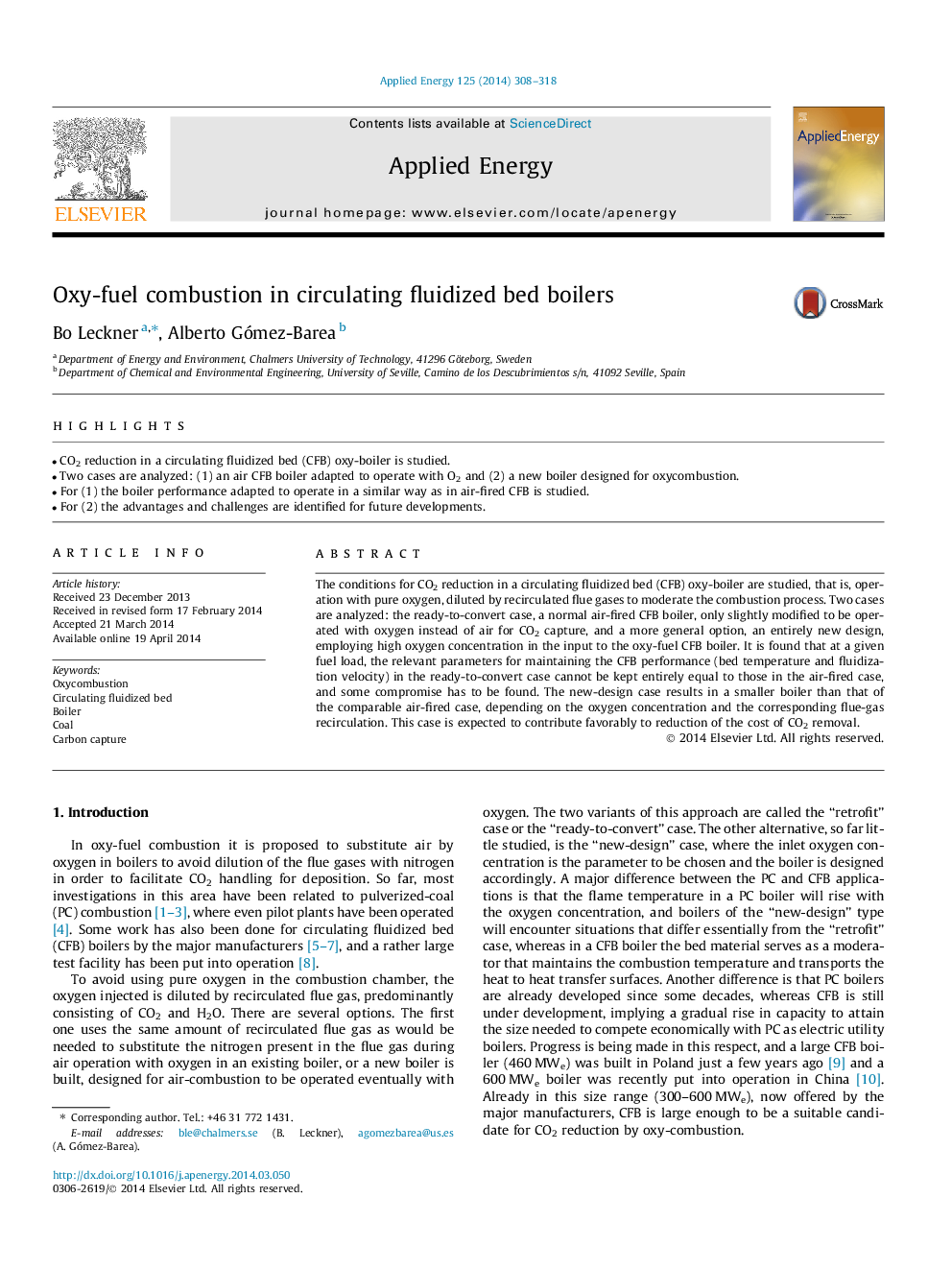| Article ID | Journal | Published Year | Pages | File Type |
|---|---|---|---|---|
| 6690356 | Applied Energy | 2014 | 11 Pages |
Abstract
The conditions for CO2 reduction in a circulating fluidized bed (CFB) oxy-boiler are studied, that is, operation with pure oxygen, diluted by recirculated flue gases to moderate the combustion process. Two cases are analyzed: the ready-to-convert case, a normal air-fired CFB boiler, only slightly modified to be operated with oxygen instead of air for CO2 capture, and a more general option, an entirely new design, employing high oxygen concentration in the input to the oxy-fuel CFB boiler. It is found that at a given fuel load, the relevant parameters for maintaining the CFB performance (bed temperature and fluidization velocity) in the ready-to-convert case cannot be kept entirely equal to those in the air-fired case, and some compromise has to be found. The new-design case results in a smaller boiler than that of the comparable air-fired case, depending on the oxygen concentration and the corresponding flue-gas recirculation. This case is expected to contribute favorably to reduction of the cost of CO2 removal.
Related Topics
Physical Sciences and Engineering
Energy
Energy Engineering and Power Technology
Authors
Bo Leckner, Alberto Gómez-Barea,
